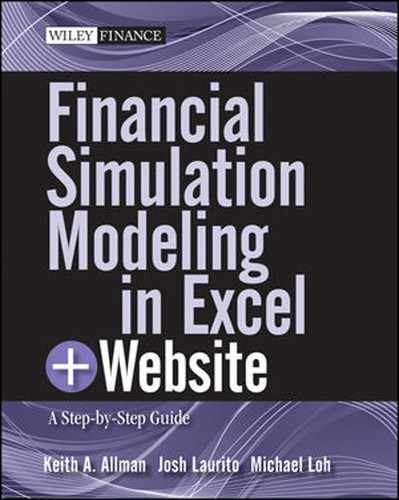CHAPTER 5
Corporate Default Simulation
In Chapter 4, we covered the theory and basic applications of forecasting price movements through simulation, which is integral to understanding the value of many financial products. We may use these techniques to help us with equity or debt pricing, but many times we are worried about the worst case. For corporate exposures the worst situation is debt default, which is important in a broad range of markets due to counterparty risk. In many financial transactions, companies that are trading or partnering with one another will run some exposure to loss if their counterparty defaults. Even contractors and other unsecured creditors will be at risk of losing money if a corporate client (or worse, a government client) is unwilling or unable to make their debt payments. Since hedging this risk is sometimes possible, there is often a concentrated effort made to engage in the credit analysis of counterparties.
Compared to modeling equity price movements, building and employing corporate default simulations can be more challenging, particularly given disparities in information. In earlier chapters, we used analyses where equity prices and interest rates (and derivatives related to these) benefited from large, liquid markets, allowing for straightforward information gathering. Daily historical stock information is generally available for all but the most illiquid of stocks, and information on major rates is published in each market's paper of record. However, many fixed income instruments trade with much less liquidity and access to market information may be impossible.
How can we apply simulation and quantitative measures to evaluate characteristics of loans and bonds, and eventually try to measure the risk of default? There are a number of ways that financial modelers have attempted to do so by adapting techniques from the equity and derivative markets. One of the methods that has been most influential on the market is an approach that is ascribed to Robert Merton and is known as the Merton Model.
